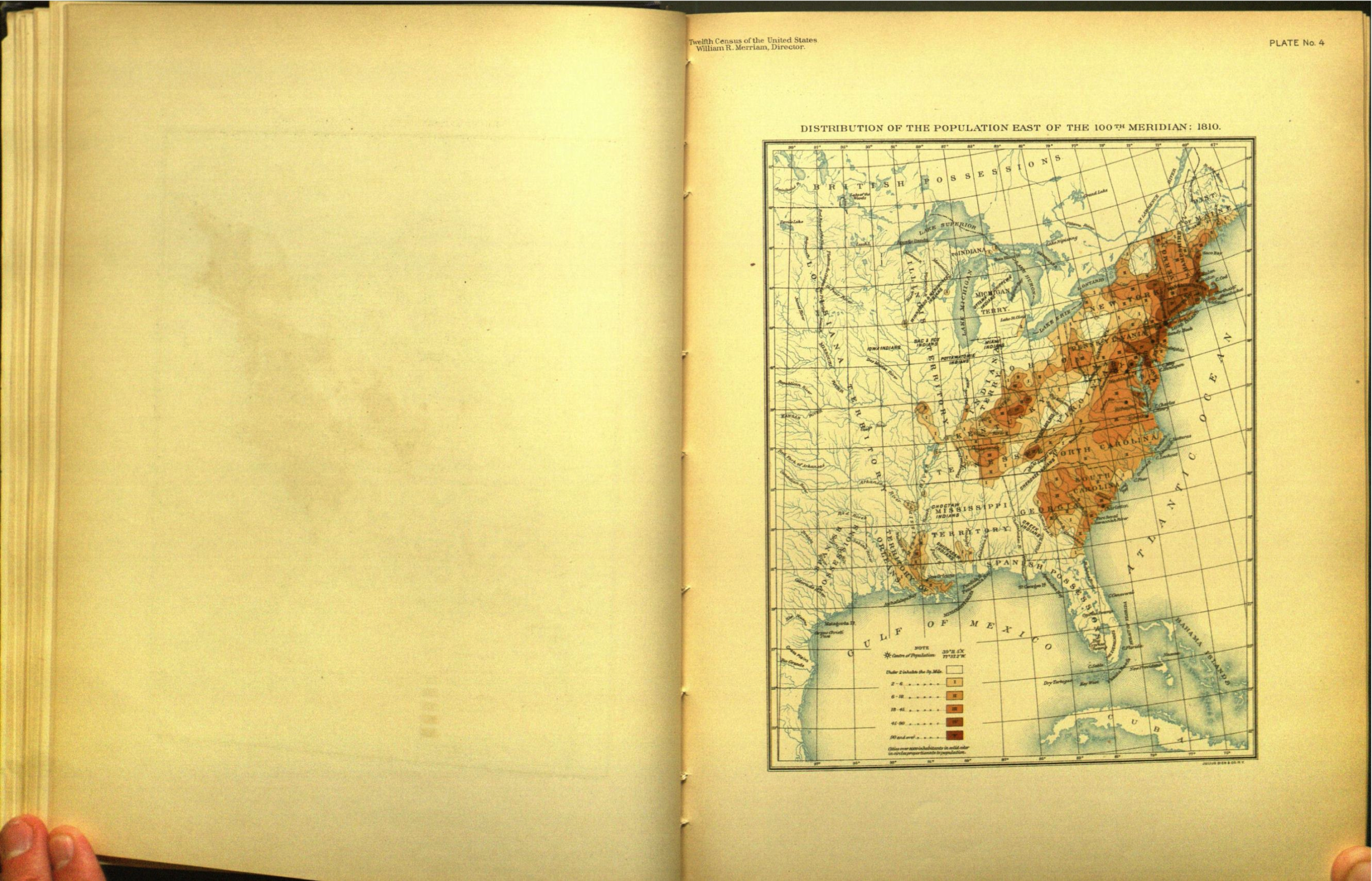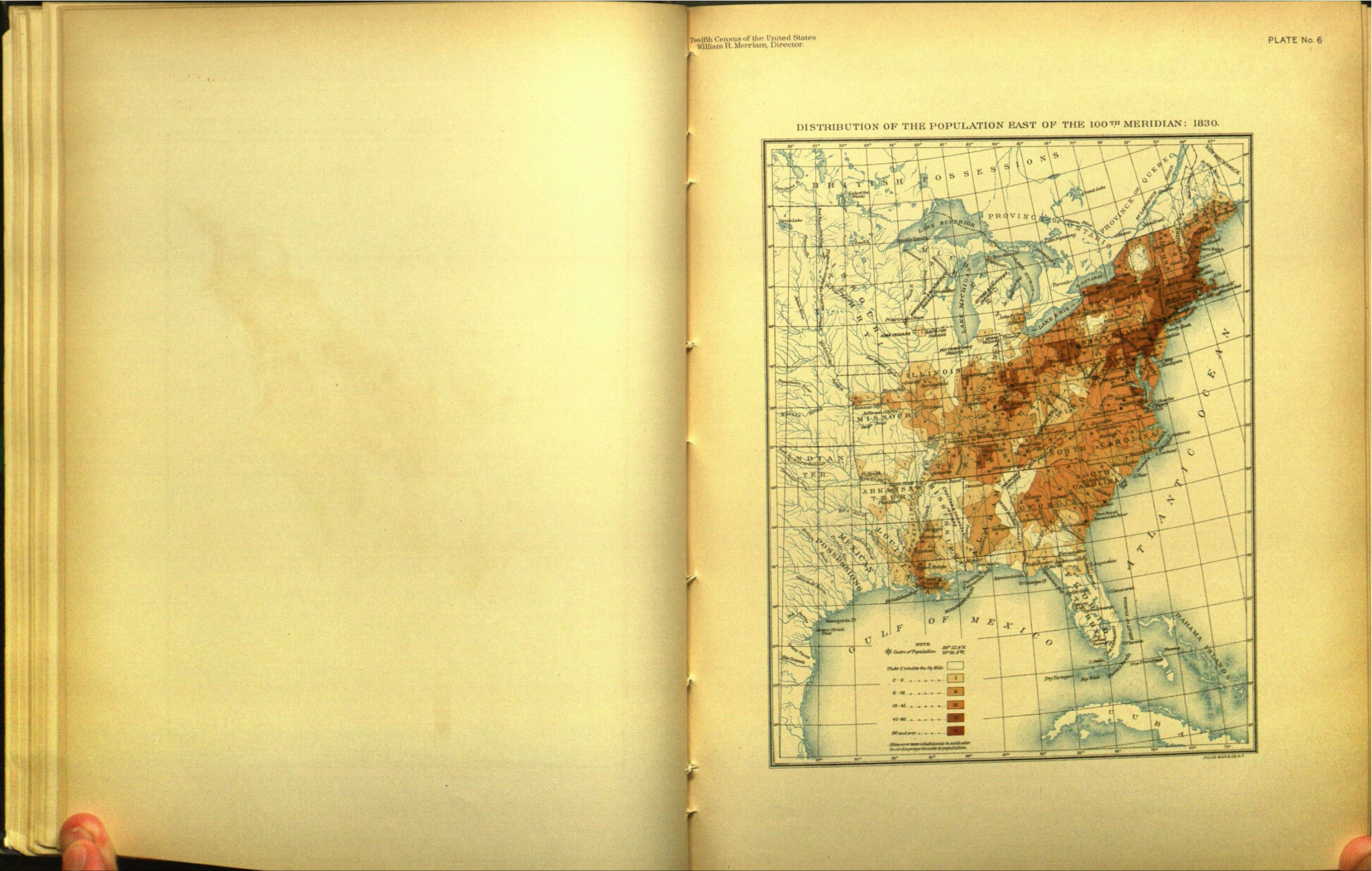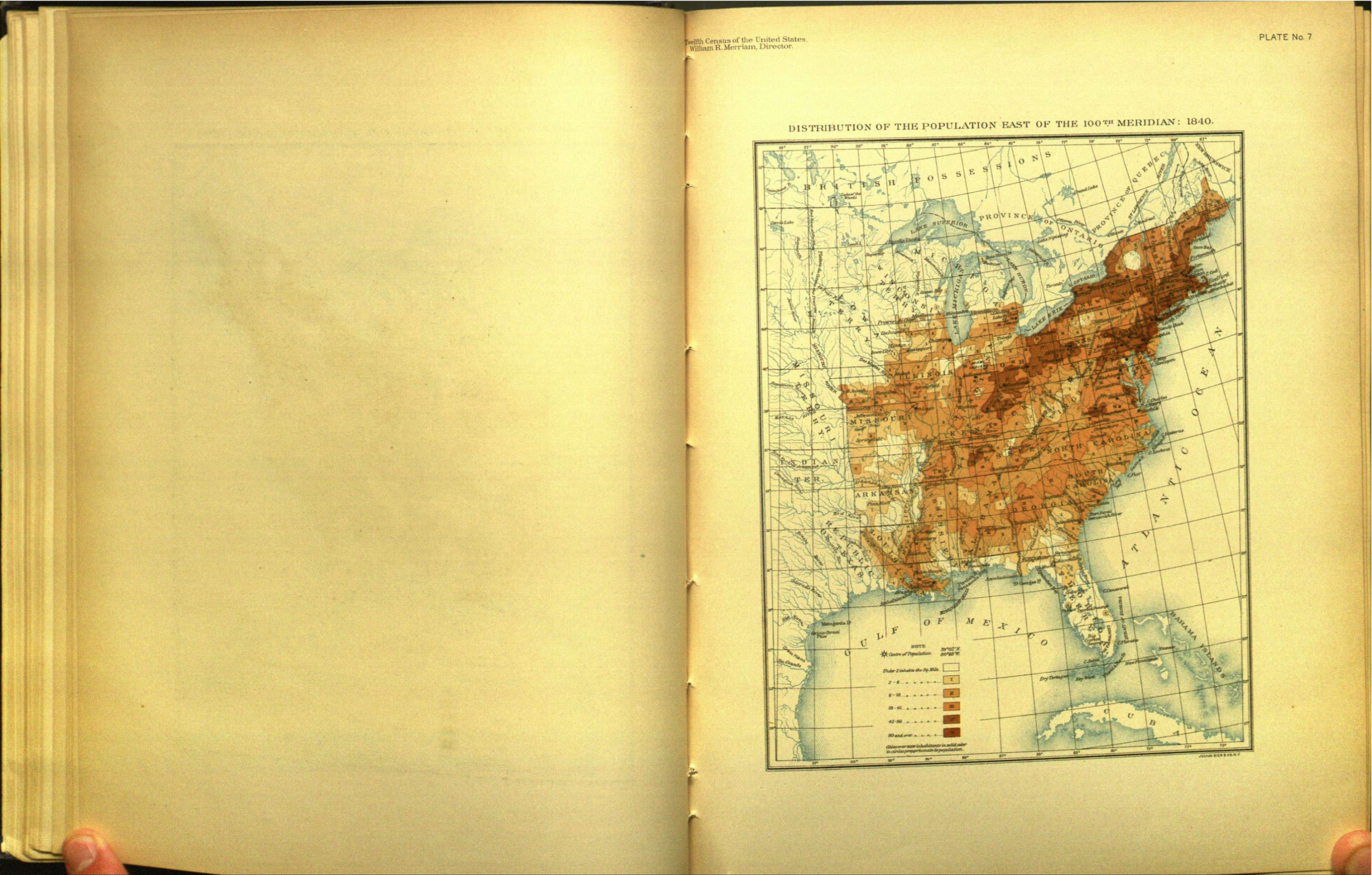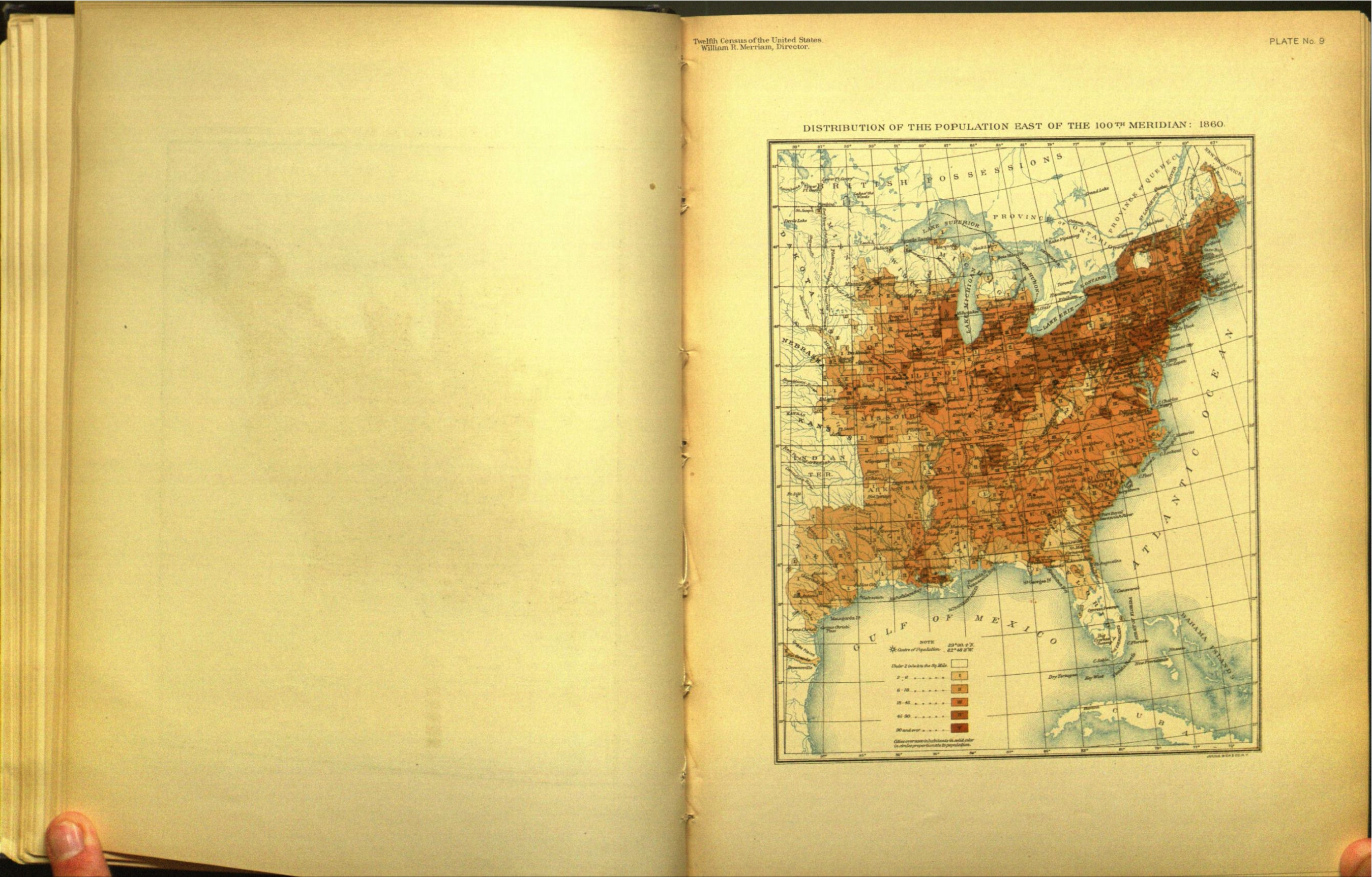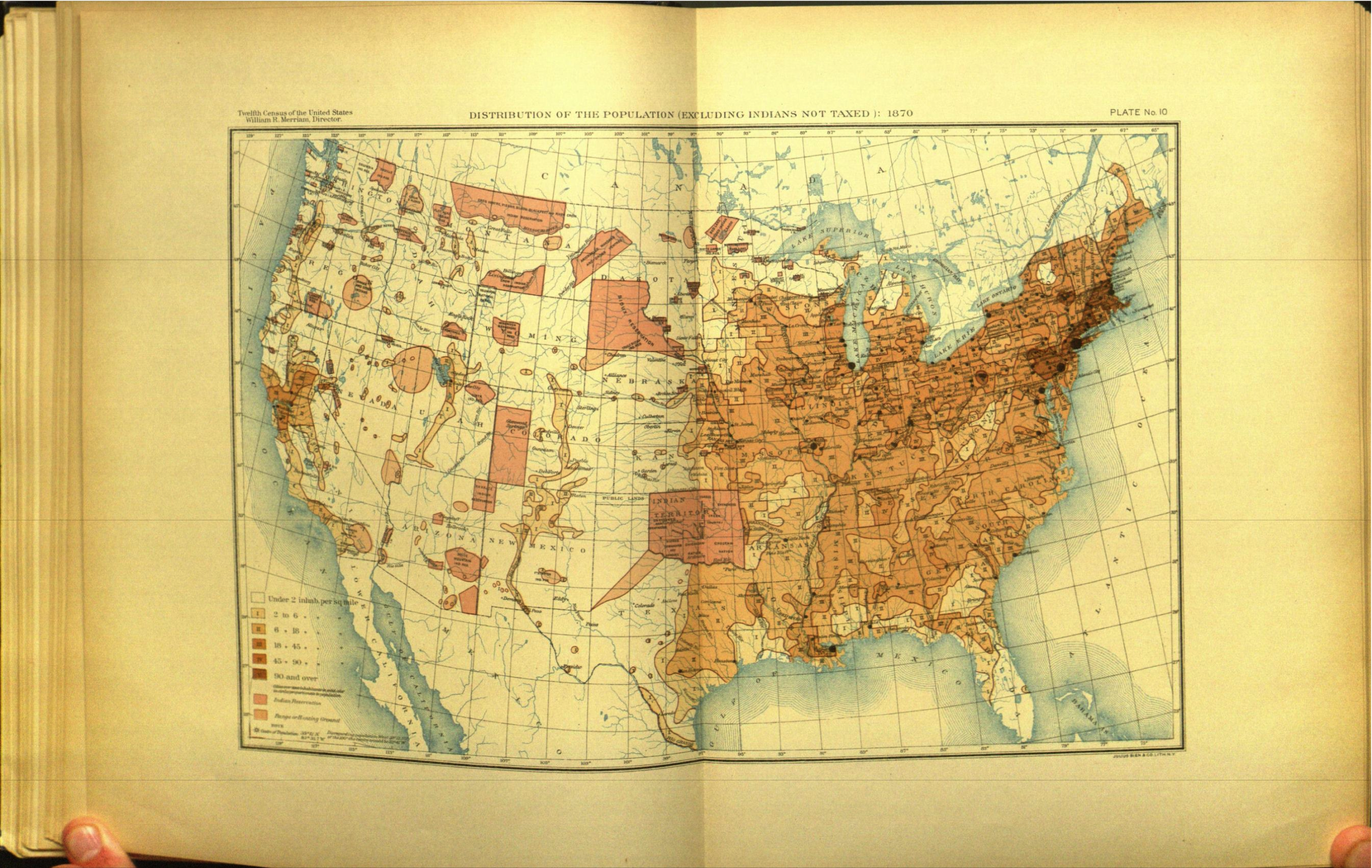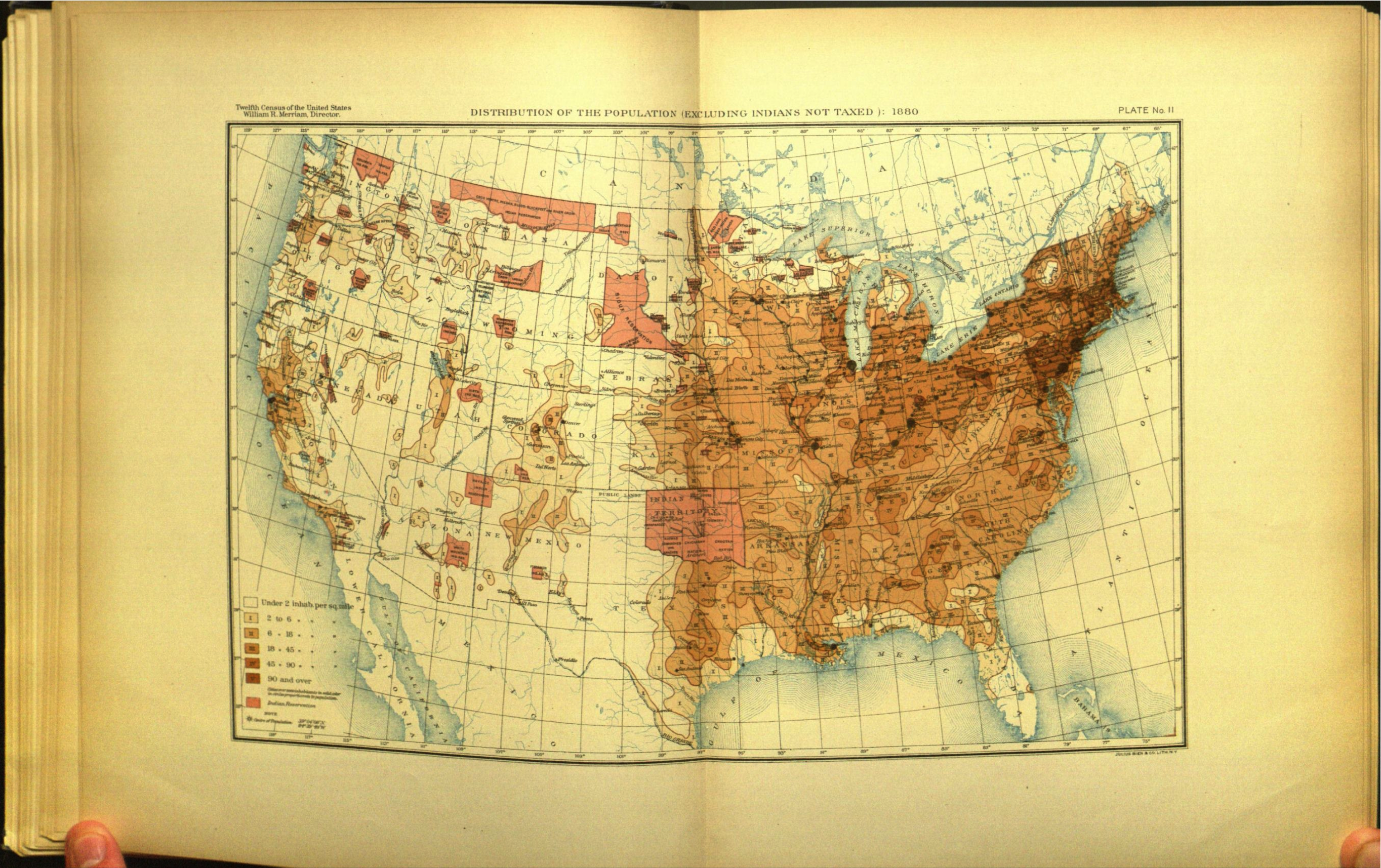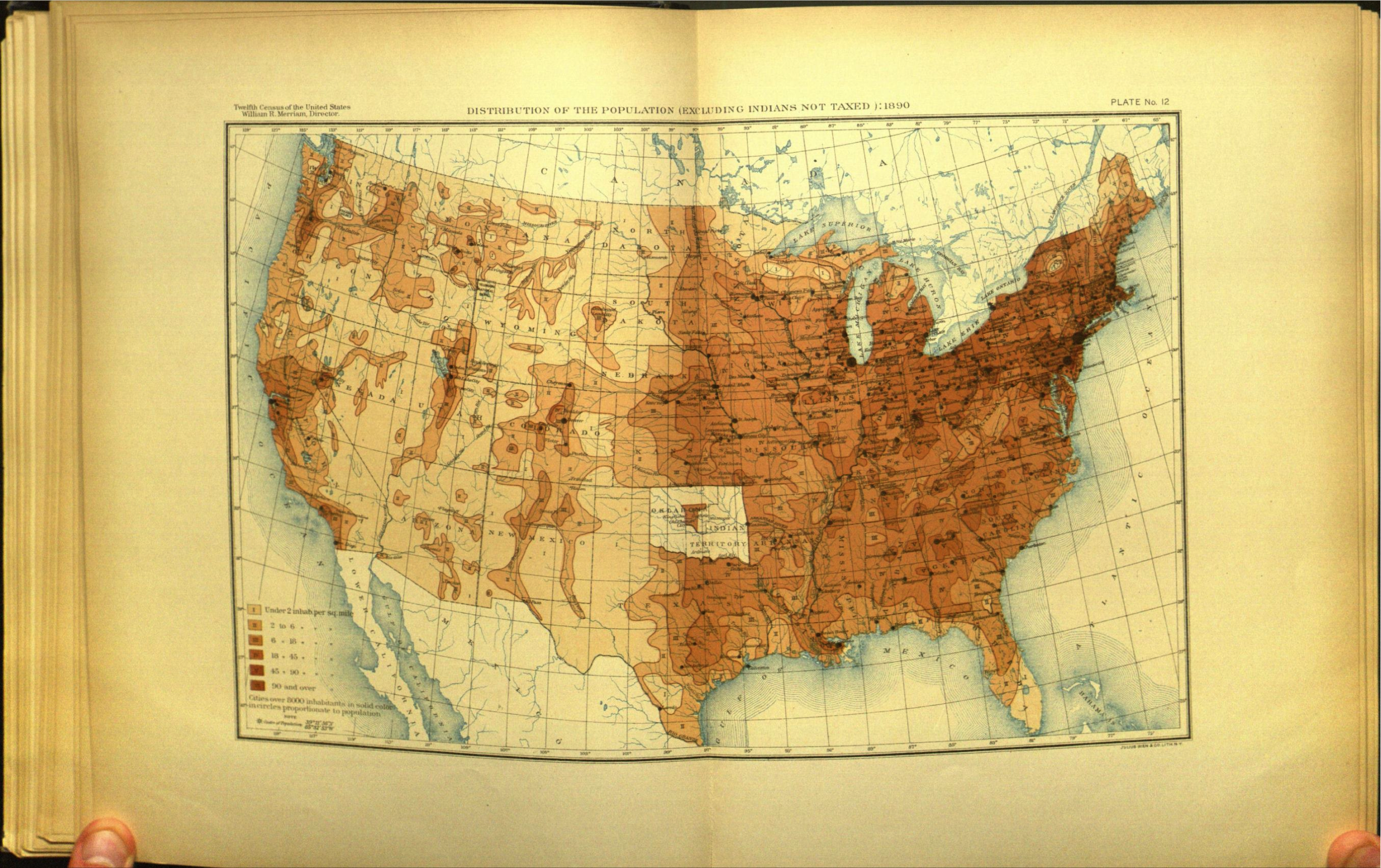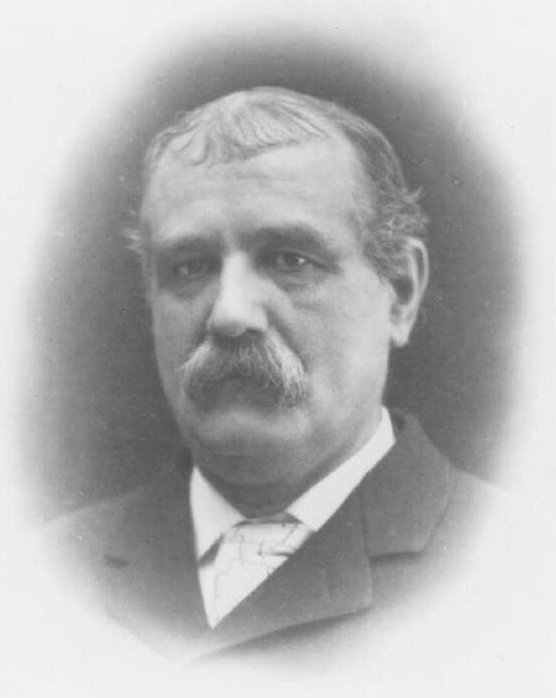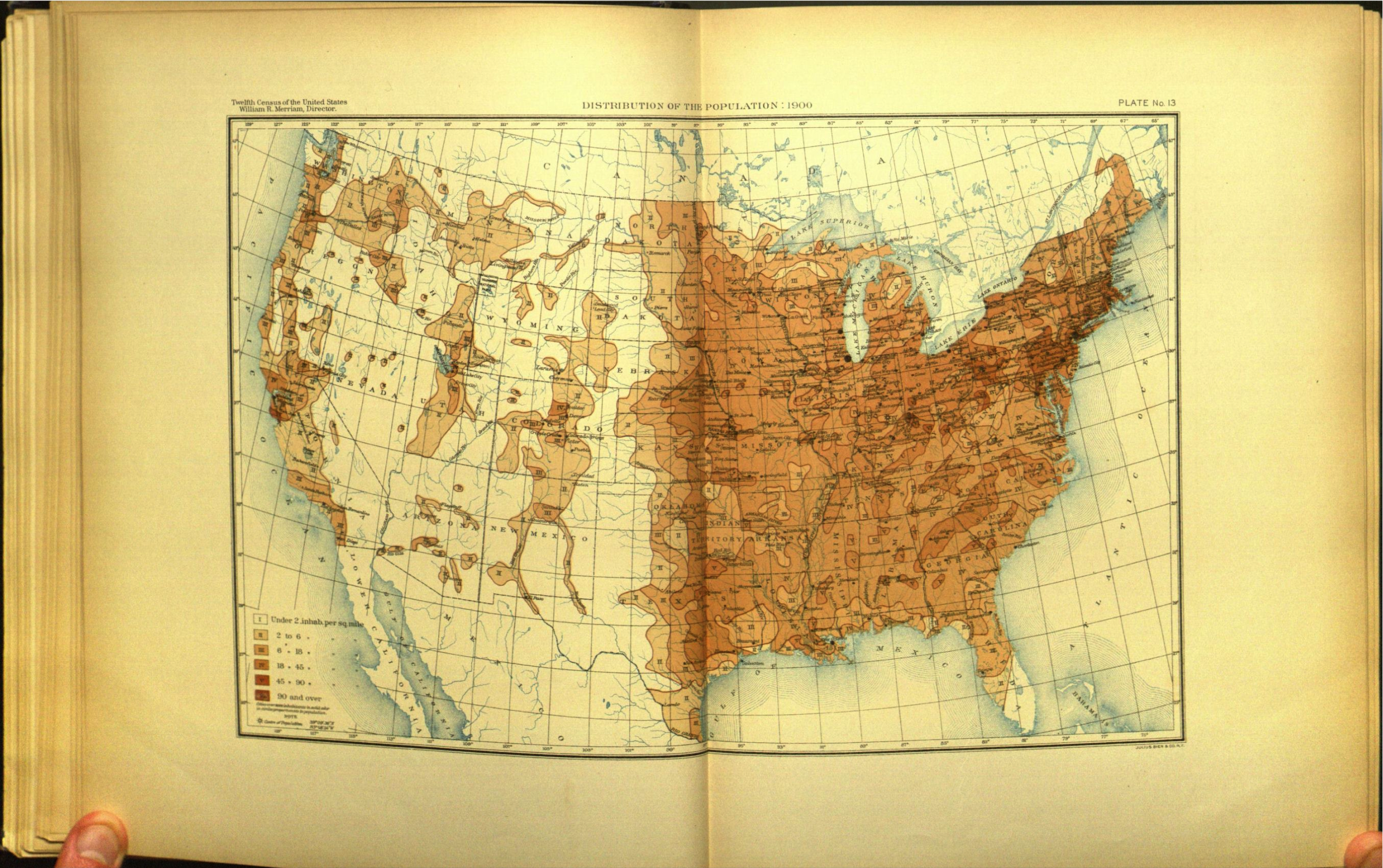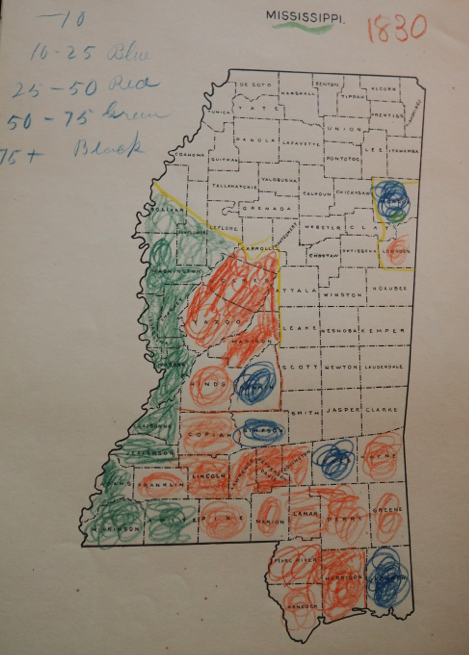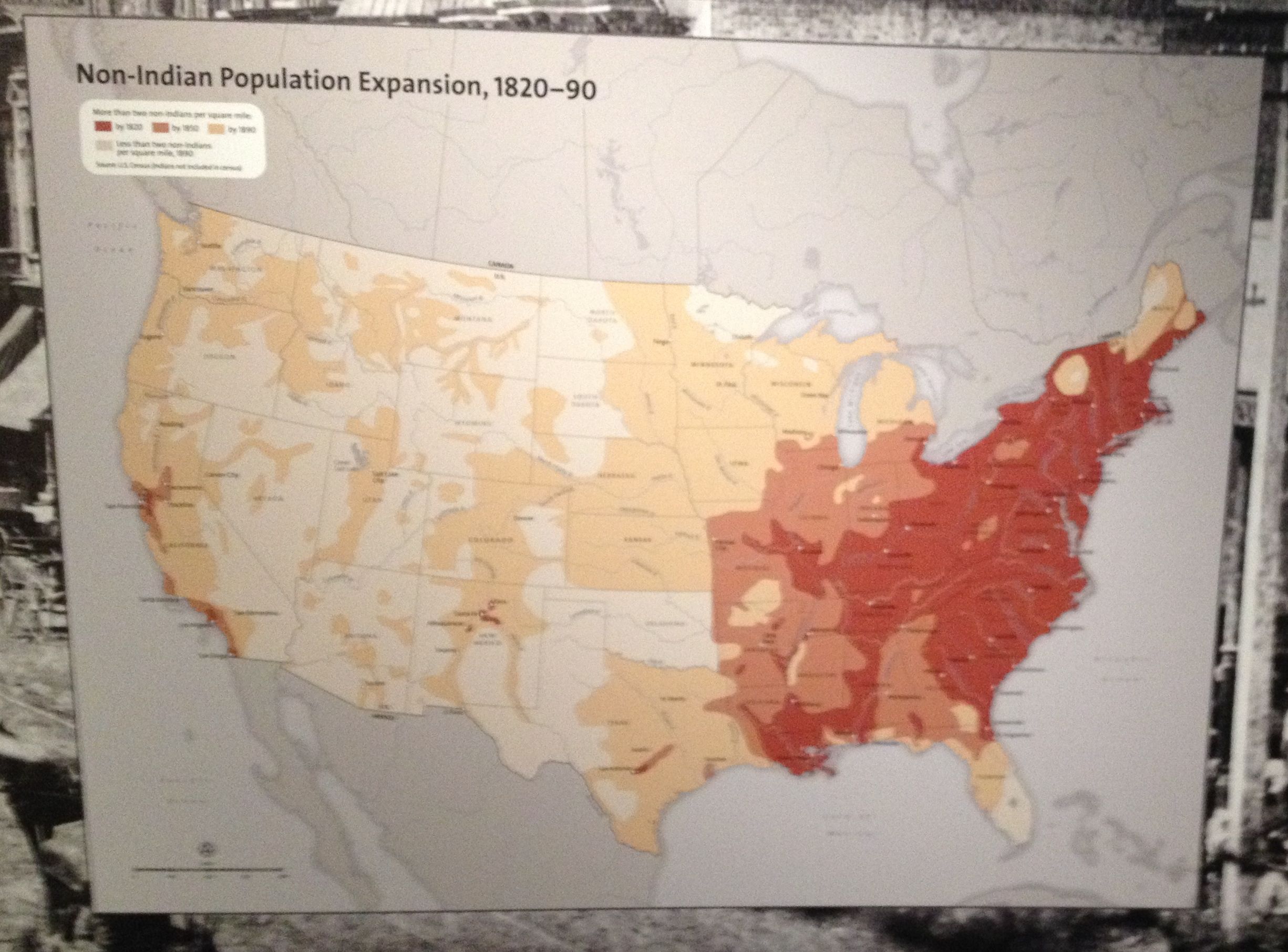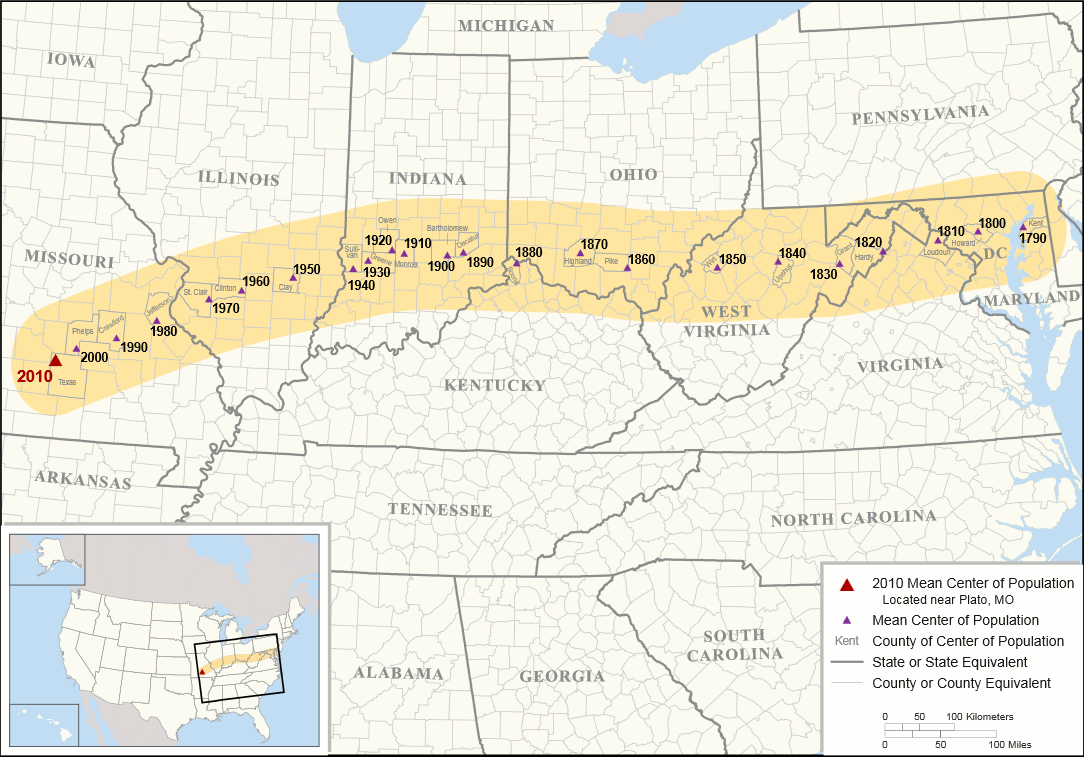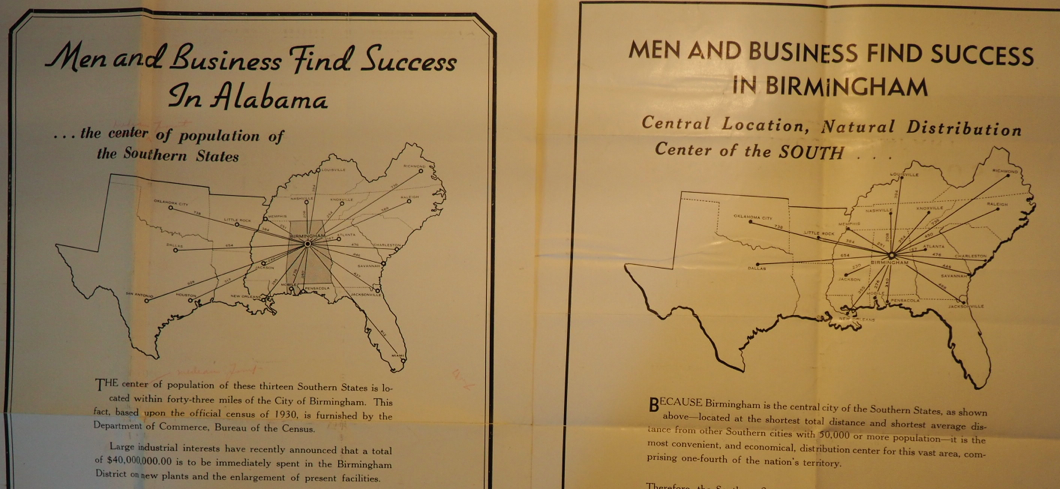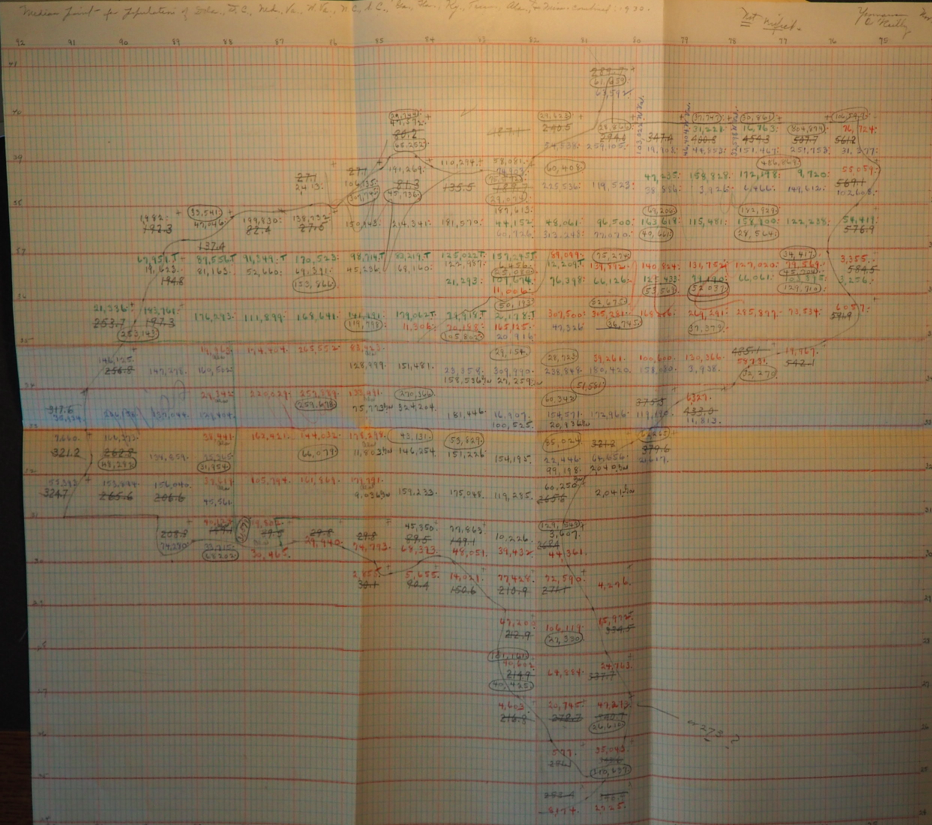Reconstructing the Map
Benjamin MacDonald Schmidt Assistant Professor of History, Northeastern University Core Faculty, NuLab for Texts, Maps, and Networks
May 2015
Overview
In a recent bulletin of the Superintendent of the Census for 1890 appear these significant words: "Up to and including 1880 the country had a frontier of settlement, but at present the unsettled area has been so broken into by isolated bodies of settlement that there can hardly be said to be a frontier line. In the discussion of its extent, its westward movement, etc., it can not, therefore, any longer have a place in the census reports." This brief official statement marks the closing of a great historic movement. Up to our own day American history has been in a large degree the history of the colonization of the Great West.
Why revisualize?
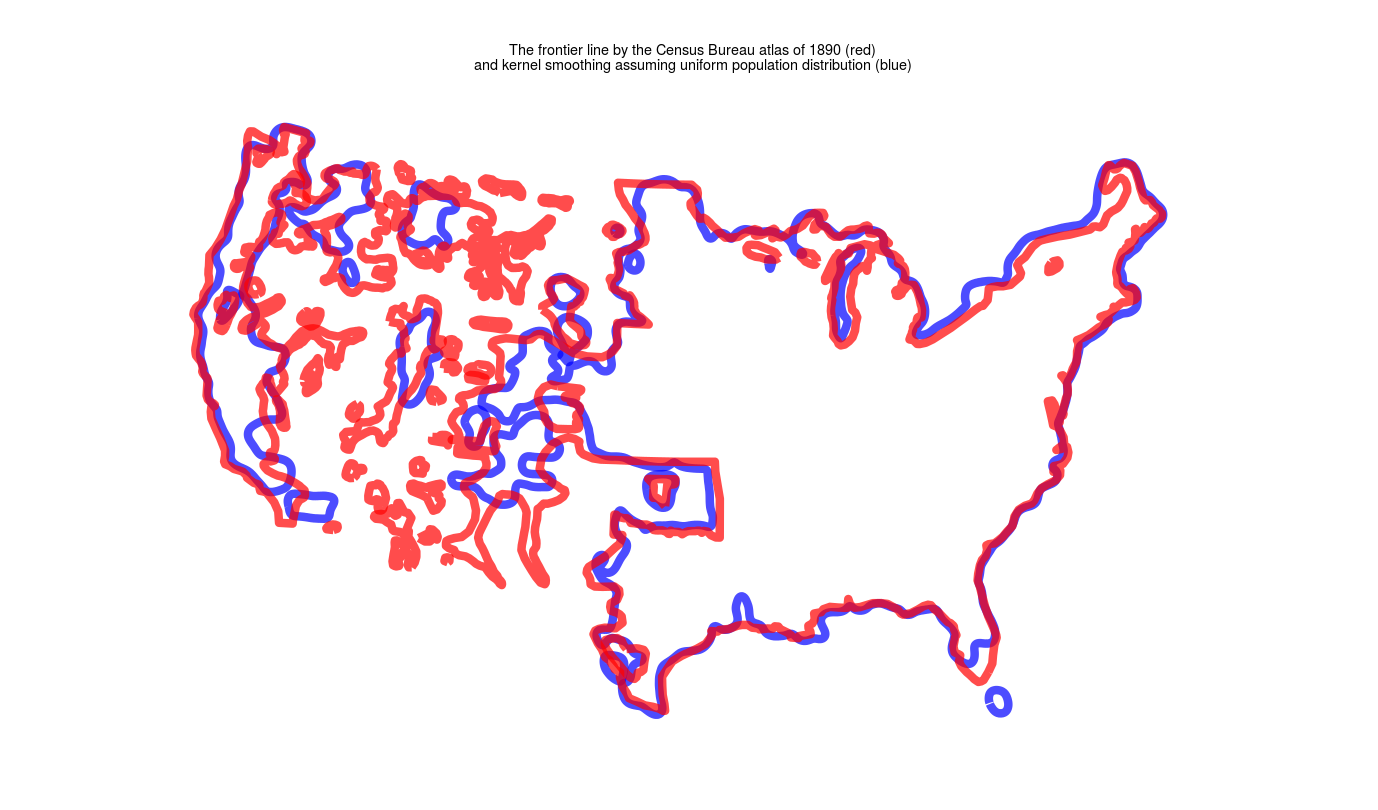
Why the rush to close the frontier?
Closing of Indian Country
Constructing authority: The Center of Population
The 1890 Census
Humanities Data Visualization
Questions digital humanists get:
- What does this tell us that we didn't know before?
- How do you know that the data you're looking at are representative?



